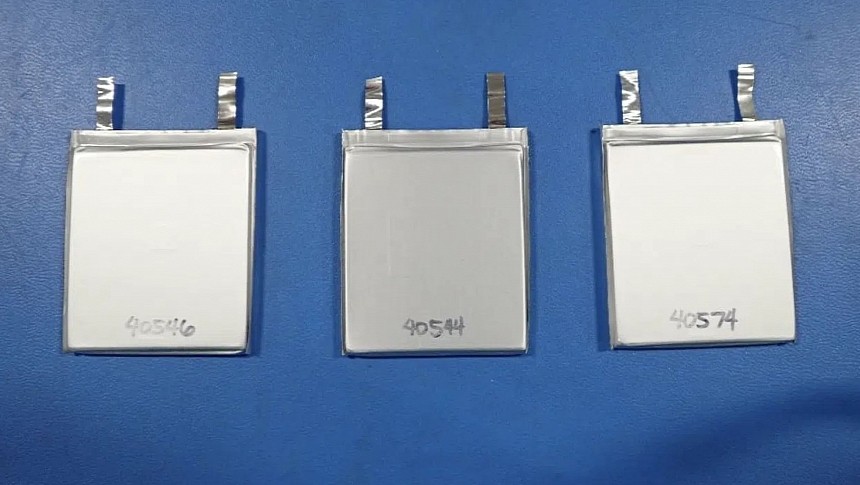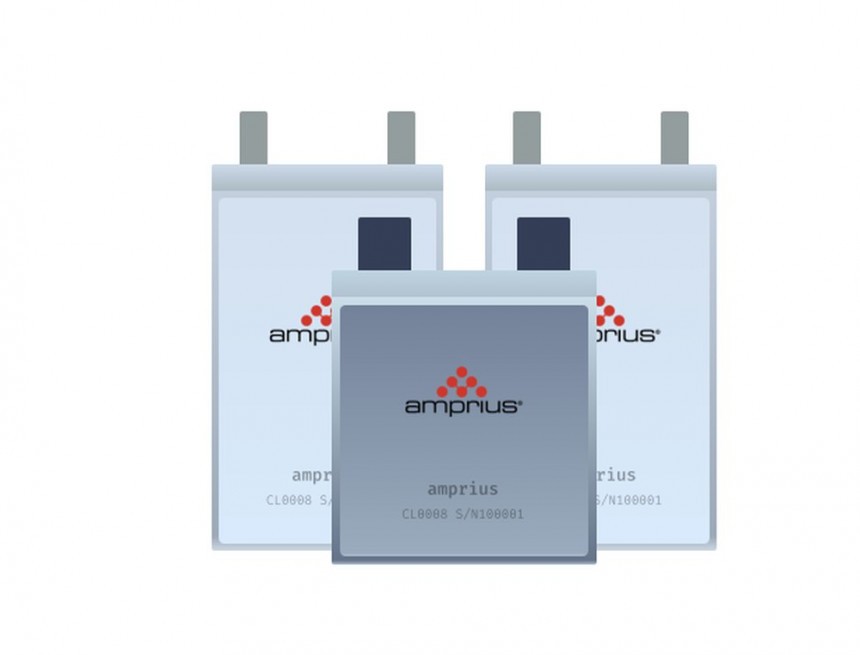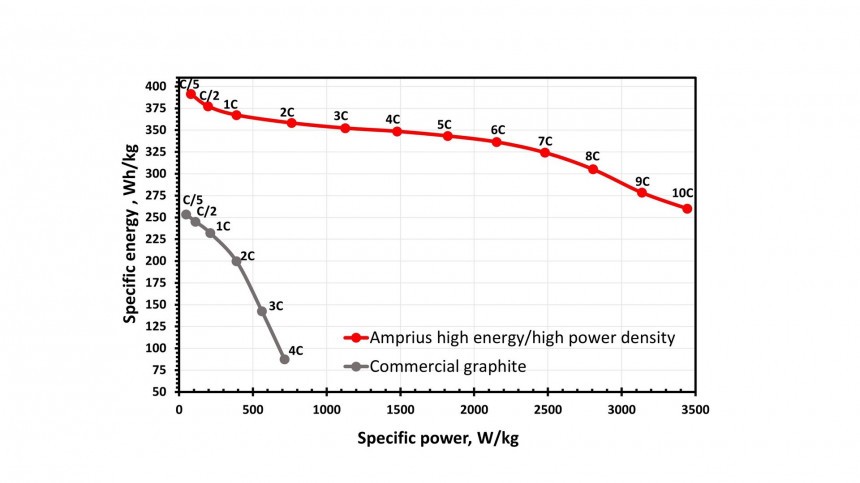In March, I used Amprius silicon anode cells as an example of how far lithium-ion cells were from mature battery technologies. In other words, a cell with twice as much gravimetric energy density as the most used ones in battery electric vehicles (BEVs) made all current electric cars obsolete. Unfortunately, that fantastic number has been decreasing at a constant pace and may soon be similar to what we already have.
On March 23, Amprius disclosed that its 500-Wh/kg battery platform was already here. Curiously, on March 22, the company talked about a 450-Wh/kg cell with a silicon anode that won the Best of Show New Product Award at the 2023 International Battery Seminar. At the time, Amprius said it was "the first known company to commercialize 450 Wh/kg, 1,150 Wh/L lithium-ion batteries." It also said it shipped them "to the US Army, Airbus, FLIR, AeroVironment, and BAE Systems, among others."
On August 3, the battery manufacturer said that its "newest ultra-high-power-high-energy lithium-ion battery" had "an impressive discharge rate of 10C while delivering 400 Wh/kg energy density." Amprius also disclosed that the silicon anode Li-ion cell presents "an ultra-fast charging (UFC) capability, reaching 80 percent charge in approximately six minutes or less." However, the battery maker said it "expects to have samples of this cell available for customers by the end of 2023." Apparently, these samples are for production cells, with commercialization "slated for early 2024." That's not the way most battery manufacturers work, at least not those with promising new tech.
QuantumScape sent A-sample cells to prospective customers, which are just to test functions. Before they reach production, we'll see B-samples (for tests in their applications, such as vehicles) and C-samples, which are close to production batteries. StoreDot, Sakuu, and SES also adopt this classification for their sample cells. It is not clear what Amprius is saying when it talks simply about samples. For commercialization to happen in early 2024, they would have to be C-samples, which is strange considering the company claims to be already selling batteries.
All Amprius batteries use silicon anode as their major technological advantage. There is nothing stating that the company is talking about different cells in these three occasions or what would make them so. Apparently, the 500 Wh/kg just dropped to 450 Wh/kg and now to 400 Wh/kg. At this 50 Wh/kg drop rate, it will soon offer 350 Wh/kg, which is worse than the semi-solid-state cells WeLion and Gotion already sell in the Chinese market.
I tried to contact the company on August 4 to clarify several doubts. The first one is why the numbers are getting lower. If we were talking about prototypes, the development process could have led to a more conservative approach to prevent issues such as thermal runaways and short lifespans. However, Amprius first said it was already delivering these cells. More recently, it stated customers would receive the first samples by the end of the year. The second question is: which of these alternatives is accurate? Unfortunately, I have not heard back from them until now.
If Amprius was talking about different cells, it did not make this clear: all it talks about is its silicon anode platform, meaning it can be used with any chemistry. For BEV applications, whatever the battery maker has to offer has to provide a minimum number of cycles. That is often translated into the mileage the electric car can achieve before its battery pack has to be replaced.
While BEV makers and advocates claim they will last as much as the car, older vehicles have proven that to be false: they will die of age or of use. In other words, replacing the components will be mandatory to keep these vehicles running after some years or miles. Considering they have no direct emissions and have already been manufactured, the longer a BEV can stay on the road, the better.
If Amprius could deliver the 500 Wh/kg it discussed on March 23, its silicon anode platform would be a game-changer. At 400 Wh/kg, that's much less impressive, especially considering that we already have cells at 360 Wh/kg.
On top of that, companies like QuantumScape and Our Next Energy (ONE) are talking about anodeless cells, which count on lithium metal that is formed after the first charge. Their structure makes them naturally more energy-dense: silicon adds material to an anode that could otherwise use only lithium. These solid-state batteries may arrive as soon as 2025 or even next year.
Both with solid-state or silicon anode platforms, energy density will depend on the chemistry they will use. WeLion and Gotion adopted one that is rich in nickel. Lithium-sulfur cells would be amazing if they could have more than a few charging cycles, but nobody managed to deliver that so far. Ultimately, it is always about the chemistry, but I still want to understand why Amprius cell's energy density seems to be dropping each time the company talks about that. I'll let you know if the battery maker shares any explanation for that.
On August 3, the battery manufacturer said that its "newest ultra-high-power-high-energy lithium-ion battery" had "an impressive discharge rate of 10C while delivering 400 Wh/kg energy density." Amprius also disclosed that the silicon anode Li-ion cell presents "an ultra-fast charging (UFC) capability, reaching 80 percent charge in approximately six minutes or less." However, the battery maker said it "expects to have samples of this cell available for customers by the end of 2023." Apparently, these samples are for production cells, with commercialization "slated for early 2024." That's not the way most battery manufacturers work, at least not those with promising new tech.
QuantumScape sent A-sample cells to prospective customers, which are just to test functions. Before they reach production, we'll see B-samples (for tests in their applications, such as vehicles) and C-samples, which are close to production batteries. StoreDot, Sakuu, and SES also adopt this classification for their sample cells. It is not clear what Amprius is saying when it talks simply about samples. For commercialization to happen in early 2024, they would have to be C-samples, which is strange considering the company claims to be already selling batteries.
I tried to contact the company on August 4 to clarify several doubts. The first one is why the numbers are getting lower. If we were talking about prototypes, the development process could have led to a more conservative approach to prevent issues such as thermal runaways and short lifespans. However, Amprius first said it was already delivering these cells. More recently, it stated customers would receive the first samples by the end of the year. The second question is: which of these alternatives is accurate? Unfortunately, I have not heard back from them until now.
If Amprius was talking about different cells, it did not make this clear: all it talks about is its silicon anode platform, meaning it can be used with any chemistry. For BEV applications, whatever the battery maker has to offer has to provide a minimum number of cycles. That is often translated into the mileage the electric car can achieve before its battery pack has to be replaced.
If Amprius could deliver the 500 Wh/kg it discussed on March 23, its silicon anode platform would be a game-changer. At 400 Wh/kg, that's much less impressive, especially considering that we already have cells at 360 Wh/kg.
On top of that, companies like QuantumScape and Our Next Energy (ONE) are talking about anodeless cells, which count on lithium metal that is formed after the first charge. Their structure makes them naturally more energy-dense: silicon adds material to an anode that could otherwise use only lithium. These solid-state batteries may arrive as soon as 2025 or even next year.
Both with solid-state or silicon anode platforms, energy density will depend on the chemistry they will use. WeLion and Gotion adopted one that is rich in nickel. Lithium-sulfur cells would be amazing if they could have more than a few charging cycles, but nobody managed to deliver that so far. Ultimately, it is always about the chemistry, but I still want to understand why Amprius cell's energy density seems to be dropping each time the company talks about that. I'll let you know if the battery maker shares any explanation for that.



